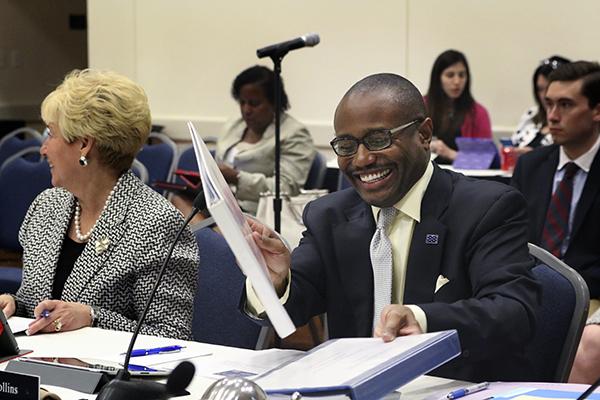Updated: June 10, 2015 at 10:25 a.m.
The University cut its spending on international fundraising almost in half last fiscal year, marking a possible shifting focus in fundraising, experts say.
Officials had previously spent more than $1 million in regions like Asia and the Middle East, and spent about $560,000 last fiscal year, according to tax forms. Experts say officials likely cast a large net initially to find areas with the most potential donors, and expenses could decrease as a new administrator is helping the development office focus their work overseas.
Officials spent $558,000 in international fundraising during fiscal year 2014, the fiscal year that immediately preceded the official public launch of the University’s $1 billion fundraising campaign. That amount more than doubled since fiscal year 2011, according to tax forms.
Aristide Collins, the vice president for development and alumni relations, said in an email that the University’s desire for a strong global presence has led officials to expand “outreach and fundraising outside the U.S.”
And in the process of fundraising abroad, the development office is now ready to start working with University officials to focus in on the areas where donations are more likely.
He said the development office will work with Doug Shaw, who will begin his new position as the senior associate provost for international strategy in July, to identify the most strategic areas for the University to fundraise abroad.
“Our efforts will continue to reflect the academic priorities and goals of the University, the interests and needs of our different constituencies and the expanding population of alumni in different countries,” Collins said.
University President Steven Knapp said after the Board of Trustees meeting in May that Shaw’s position signals a step for the University to be more effective when operating internationally.
Collins declined to provide details on exactly what the fundraising expenses include.
Top administrators like Knapp and School of Business dean Linda Livingstone make international trips every year to countries like China. During visits abroad, officials often attend alumni gatherings, meet with prospective students and court potential donors. For example, Knapp traveled to Turkey in November to further his relationship with a billionaire alumnus who lives there.
John Baguley, the CEO of the fundraising firm International Fundraising Consultancy, said in an email that officials often try to secure gifts from international donors before publicly launching a fundraising campaign. He said international donors also often give large gifts — the type of donation officials want to announce in the lead-up to a campaign.
“The heart grows fonder with time and distance, so these people are likely to give substantially if they are in touch when abroad, especially if they live permanently overseas,” Baguley said.
The University reached its highest expenses for foreign fundraising during fiscal year 2012, when it spend $1.29 million, with nearly 90 percent of that money going toward fundraising in East Asia and the Pacific.
Michael Nilsen, the vice president for public affairs at the Association for Fundraising Professionals, said high costs in international fundraising can often come from the startup costs associated with establishing a presence in new countries. Nilsen said that after all those initial costs are paid off, spending will naturally decrease.
“There’s probably a fair amount of overhead in order to start offices overseas or creating programs, getting staff out there, trying to create system of alumni,” Nilsen said.
An alumni presence is the driving force to start a fundraising push abroad, he said. Officials spent about $370,000 in fundraising in East Asia and the Pacific, an alumni base hotspot, in fiscal year 2014. That amount is about double the fundraising expenses in all the other regions combined. More than 900 GW alumni live in South Korea alone, according to GW’s alumni website.
“For a university, you got to go where the donors are. You got to go where the alumni are,” he said.”
A decrease in international fundraising expenses could also indicate the end of a phase dedicated to raising money from international donors, according to Arthur Criscillis, a managing partner at the fundraising firm Alexander-Haas.
“It could well be they dove in with enthusiasm and it may well be that after having made those investments they realized that they weren’t going to garner the kind of support that they had hoped for and would merit that kind of investment,” Criscillis said. “So they may well have pared back to meet reality and reallocated those funds to areas that would be more productive for the University.”
He added that the costs related to fundraising can vary year to year because of the manpower that fundraising requires. All deans at GW are supposed to spend 40 percent of their time fundraising.
“A lot of times when people report costs to raise a dollar, you get how much time is being counted,” Criscillis said. “Twenty-five percent of the dean’s salary [could be counted].”







